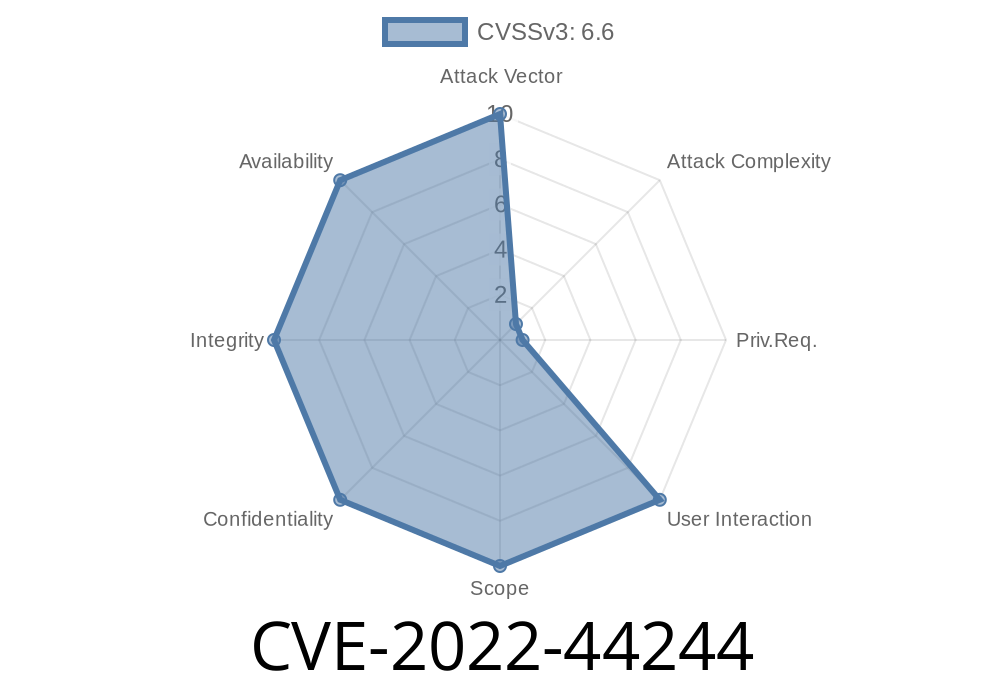In this in-depth analysis, we will be examining a critical vulnerability (CVE-2022-44244) found in Lin-CMS v.2.1, which can lead to a major security breach by bypassing authentication and escalating an attacker's privileges to Super Administrator. We will discuss the details of the vulnerability, how it can be exploited, and what steps can be taken to mitigate such attacks. To provide proper context and understanding, we will also share code snippets and links to original references.
Background
Lin-CMS is a popular open-source content management system (CMS) that provides a secure and efficient way for users to manage their internet resources. It uses a robust permission system to restrict access to different parts of the system, with Super Administrator being the highest level of access.
Here are links to the original references relating to CVE-2022-44244
1. https://cve.mitre.org/cgi-bin/cvename.cgi?name=CVE-2022-44244
2. https://nvd.nist.gov/vuln/detail/CVE-2022-44244
Vulnerability Details
The vulnerability CVE-2022-44244 exists in the authentication module of Lin-CMS v.2.1 due to insufficient input validation and permission checks. This allows malicious users to forge requests that can bypass the normal authentication process, ultimately gaining unauthorized access to the system with escalated privileges, up to Super Administrator.
Here's a code snippet showcasing the lack of proper input validation and permission checks in the vulnerable module:
def login(username, password):
user = User.query.filter_by(username=username).first()
if user is not None and user.verify_password(password):
access_token, access_expires = generate_access_token(user)
refresh_token, refresh_expires = generate_refresh_token(user)
return jsonify({
'access_token': access_token,
'access_expires': access_expires,
'refresh_token': refresh_token,
'refresh_expires': refresh_expires,
'user': user.to_dict(),
}), 200
else:
return jsonify({'message': 'Invalid username or password'}), 401
As we can see, the authentication function only checks if the entered password matches the user's password stored in the database. The function does not validate other critical input data, such as the user's role or permission level, making it possible to forge requests that bypass authentication and escalate privileges.
Exploit Details
To exploit this vulnerability, an attacker may craft an HTTP request with manipulated variables in the POST data. This can be achieved by sending specially crafted payloads or scripts that can exploit the vulnerabilities in the authentication module. An example of such a payload would be:
{
"username": "attacker",
"password": "attacker",
"is_superuser": "true"
}
By modifying the is_superuser parameter in the POST data, the user's role can be transformed into a Super Administrator, even after bypassing the authentication process, gaining full control over the vulnerable CMS.
To mitigate this vulnerability, developers of Lin-CMS should apply the following fixes
1. Implement proper input validation and permission checks. This can include validating user input against defined patterns, using prepared statements, and validating role-based access control (RBAC) parameters.
2. Update to the latest version of Lin-CMS, where this vulnerability has been patched. It is crucial for users to stay up to date with software updates and security patches to ensure a safer environment.
Conclusion
The authentication bypass vulnerability (CVE-2022-44244) in Lin-CMS v.2.1 allows attackers to gain unauthorized access by escalating their privileges to Super Administrator. This highlights the need for robust input validation and role-based access checks in web applications. By applying the recommended mitigations, developers and administrators can protect their CMS from such exploits that may lead to devastating security breaches.
Timeline
Published on: 11/09/2022 22:15:00 UTC
Last modified on: 11/17/2022 14:35:00 UTC
